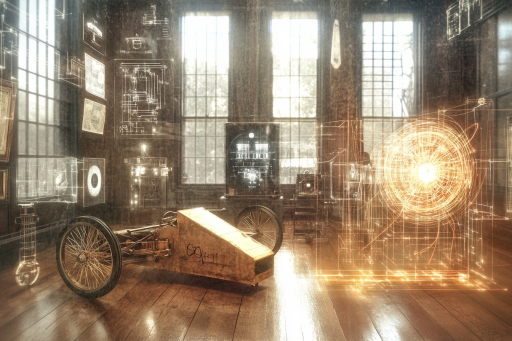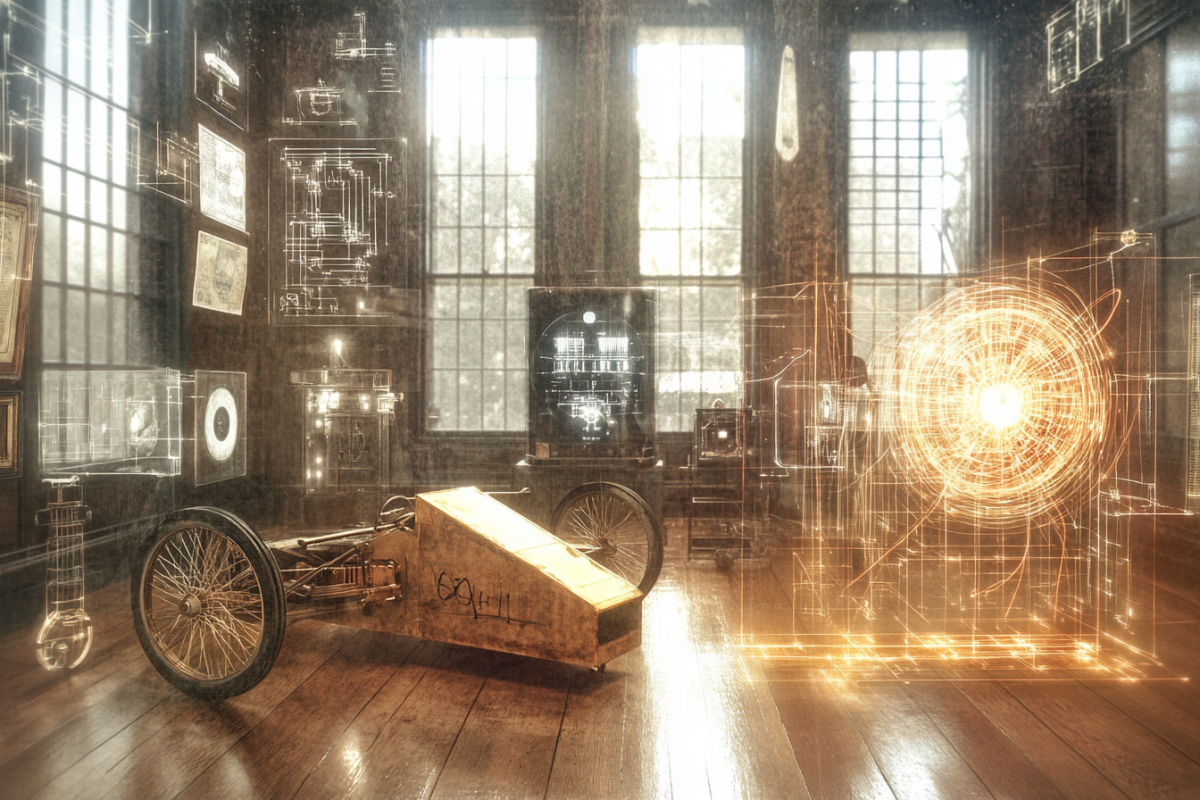
History is filled with groundbreaking ideas that arrived too soon for their time. Some inventions were dismissed, misunderstood, or overshadowed by more familiar technologies, only to resurface decades or even centuries later as revolutionary concepts. These forgotten creations pushed the boundaries of science, engineering, and imagination long before the world was ready for them. As innovation continues to evolve, these past breakthroughs serve as reminders that the future is often hidden in the past.
The Antikythera Mechanism – The World’s First Computer

Discovered in an ancient shipwreck, the Antikythera Mechanism is a mysterious device that dates back over 2,000 years. This intricate system of gears was capable of tracking celestial movements, predicting eclipses, and even calculating the positions of the planets. It was essentially an early form of an analog computer, centuries ahead of its time. Its advanced engineering baffled scientists, proving that ancient civilizations were far more technologically sophisticated than once believed.
The Dynasphere – A Futuristic One-Wheeled Car

In the 1930s, British engineer J.A. Purves designed a giant, single-wheeled vehicle known as the Dynasphere. Inspired by sketches from Leonardo da Vinci, this rolling machine was meant to be the future of personal transportation. Despite its innovative design, the concept proved impractical and difficult to control. While it never became mainstream, modern self-balancing vehicles and gyroscopic technology bear striking similarities to its early vision.
Tesla’s Wireless Power Transmission

Nikola Tesla dreamed of transmitting electricity wirelessly, envisioning a world where power could be sent through the air without the need for wires. In the early 1900s, he built the Wardenclyffe Tower, an experimental station meant to prove his theories. However, the project was abandoned due to financial difficulties and a lack of support from investors. Today, wireless charging technology and experimental long-range power transmission methods are proving that Tesla’s vision was far ahead of its time.
The Steam-Powered Automobile That Could Have Changed History

Long before gasoline-powered cars took over, steam-powered vehicles were making waves in transportation. In the early 1900s, the Stanley Steamer was one of the fastest cars on the road, reaching speeds that rivaled early gas-powered models. However, the rise of the internal combustion engine and the convenience of gasoline pushed steam technology into obscurity. With today’s focus on clean energy, steam-powered transportation may have been an environmental game-changer if it had been fully developed.
The Air-Purifying “Biosphere” House

Decades before sustainable living became a global concern, scientists experimented with self-sustaining homes that could recycle air, water, and food. In the 1980s, projects like Biosphere 2 attempted to create a completely enclosed ecosystem, proving that humans could potentially survive in space or harsh environments. While the original projects faced challenges, their technology has influenced modern green architecture and closed-loop environmental systems. The concept of self-sustaining habitats is now being revived for space exploration and eco-friendly cities.
The Solar-Powered Printing Press

In the 19th century, Augustin Mouchot invented a solar-powered printing press that harnessed the sun’s energy to create steam and power machines. His invention demonstrated the potential of solar energy at a time when coal and fossil fuels were dominant. Despite its success, industrialists were more interested in traditional energy sources, and the project was abandoned. Today, as solar power becomes a leading renewable energy source, Mouchot’s vision looks more relevant than ever.
The Pneumatic Subway of New York City

In the 1860s, an experimental subway system powered by air pressure was built beneath New York City. The pneumatic tube railway used pressurized air to propel train cars through underground tunnels, offering a cleaner and quieter alternative to steam-powered locomotives. However, political interference and financial struggles led to the project’s abandonment. Modern high-speed vacuum tube transportation concepts, such as Elon Musk’s Hyperloop, bear a striking resemblance to this forgotten invention.
The Water-Powered Car That Disappeared

In the 1970s, inventor Stanley Meyer claimed to have built a car that ran on water instead of gasoline. His device, called a water fuel cell, allegedly split water molecules to generate hydrogen fuel. Despite demonstrations and growing public interest, Meyer’s invention was never commercially developed, and he died under mysterious circumstances. While many skeptics dismiss the idea, modern advances in hydrogen fuel technology suggest that water-powered vehicles may not be as far-fetched as they once seemed.
Artificial Gills for Underwater Breathing

In the early 2000s, inventors experimented with artificial gills—devices that could extract oxygen from water, allowing humans to breathe underwater without bulky air tanks. The concept, inspired by how fish extract oxygen, aimed to revolutionize diving and underwater exploration. While no fully functional model has been developed yet, advances in nanotechnology and material science could bring artificial gills closer to reality. If perfected, they could change the way humans interact with the ocean.
The Future Hidden in the Past

Many of the world’s most incredible inventions were dismissed or forgotten simply because they arrived too soon. Yet, history has shown that yesterday’s failures can become tomorrow’s breakthroughs. As technology advances, old ideas resurface with newfound potential, proving that innovation is a continuous cycle. Perhaps the next revolutionary invention is one that’s already been invented—just waiting for the world to catch up.





